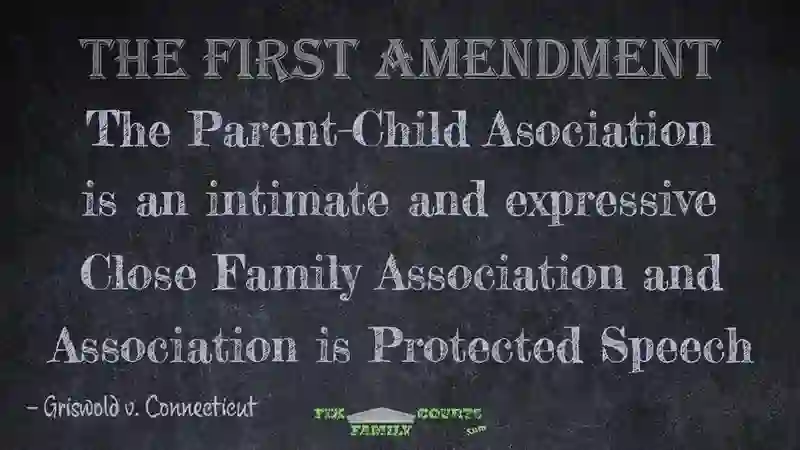The First Amendment to the United States Constitution

The First Amendment is the first of the 10 amendments that were added to our constitution 41 months after the constitution was ratified. An agreement was made to introduce specific constitutional protections for the people in an effort to get the constitution ratified when the lack of such enumerated protections threatened to prevent the constitution from being ratified. Seventeen proposed amendments were submitted by James Madison and the Congress approved all seventeen. By December 15, 1791, three-fourths of the states had ratified ten of these proposed amendments and amendments 1 thru 10 were incorporated into our constitution as the ten amendments we refer to as the “Bill of Rights.”
The First Amendment reads:
Congress shall make no law respecting an establishment of religion, or prohibiting the free exercise thereof; or abridging the freedom of speech, or of the press; or the right of the people peaceably to assemble, and to petition the government for a redress of grievances.
Amendment 1, the first of ten amendments, is arguably the most important of the rights that secure our freedoms if we consider the Second Amendment the right of last resort to ensure the other nine. The 1st amendment is certainly the amendment the courts are most willing to protect out of the 10 amendments comprising our Bill of Rights.
Why is the First Amendment important in Family Law?
In the 19th century, the law held that your rights as a parent came from your legal marriage to the child’s other parent. If a child’s parents were not married to each other then that child was considered a bastard, a second class child with lesser rights than other children. However, in the early 1970’s the Supreme Court held in a series of cases that these bastardy laws were absolutely unconstitutional because it is morally and ethically wrong to punish a child for the sins of the parent. These cases eliminated second class children almost everywhere in law.
The Court held that the rights of a child to a parent were individual rights that could NOT depend upon a marriage between the child’s parents and reciprically that each parent’s rights to the child are also individual rights which could NOT be made to depend upon a marriage between the child’s parents. In a later case, the Court held that when a natural parent comes forward to establish a relationship with the child and takes on parental responsibilities for that child, the constitution recognizes that parent’s rights.
Relationship is another term for association. The right to establish and maintain intimate and expressive associations is protected as a First Amendment right that although not enumerated in the text of the amendment is nonetheless essential to free speech which cannot exist without association. The states are subject to First Amendment limitations by the 14th Amendment. The right of family privacy between a parent and a child is an important element of this associational right, sometimes referred to as the right to live together as a family.
The one place where bastardy laws still reign supreme is in family law child custody cases between fit parents who divorce or never marry. Childreen of divorced or never married parents remain second-class citizens in these cases, and divorce courts wrongly claim that it is in these children’s best interests that child custody courts treat them as second-class citizens.
How can it possibly be in any child’s best interests for that child to have lesser right to have two fit parents in its life than children of married parents? It’s one thing if a parent chooses not to be in the child’s life. It is another thing altogether for a child custody judge to claim it is in the child’s best interest for the State to deprive that child of equal rights to both parents simply because a sole government official believes it to be better for the child.
The child’s rights to each parent are individual First Amendment protected close family associational rights. The rights of each parent are individual First Amendment protected close family associational rights. The key word here is “individual.” These rights do NOT and can NOT be made to be dependent upon a marriage between the child’s parents because the First Amendment does NOT permit it.
Once the point is established in the record that the case is controlled by First Amendment law, we have an immense body of First Amendment law addressing the rights of adults and the rights of children under very clear bright line rules. What family law desperately needs is bright line rules that protect the rights of this class of child to be as equally free from unwarranted government interference into thier private family lives as are children of parents who are married to each other.
Family Law Courts need to stop this impermissible marital discrimination they impose upon our children making them second-class children “In Their Best Interests.”
Conclusion: First Amendment to the American Constitution
The body of First Amendment law in this country is immense and powerful. It establishes clear bright line rules that are widely understood and accepted by all courts. By demonstrating that your child’s rights to you and your rights to your child are in actual fact First Amendment rights of intimate and expressive close family association for the purpose of educating children though speech and examples in daily living, for worshiping together as a family, and for sharing family privacy, and living together as a family, we force the child custody court to view its actions through an entirely different and very powerful lens.
When their actions are viewed honestly through the First Amendment lens, these courts will have to begin transitioning their thinking from their current 19th century antiquated beliefs into our modern 21st century beliefs and understanding of freedom and constitutional rights in America. They will have no choice but to recognize the real irreparable injuries they have caused millions of American children simply because they refused to bring their belief systems in line with the Supreme Court’s 21st century explanation of American freedom as guaranteed by our United States Constitution.
Divorce and Child Custody
Our body of constitution work began life as a means of bringing American family law into the 21st century. Every constitutional concept we discuss that has relevance to the practice of family law will have discussion in family law terms and will be expressed relative to how it should be used as a basis for best practices in family law under the core terms of Divorce and Child Custody. The Palmer Approach to Best Practices in American Law began life as the Palmer Approach to Best Practices in Family Law.
As we enlarge our body of Best Practices in American Law, we will provide best practices on constitutional law in areas that are not directly relevant to improving family law and we will be providing best practice guidance towards achieving other important freedom enhancing purposes. As you read, it is important to separate the underlying principles of law from their best practice application towards any particular goal such as improving the practice of family law. We will be working towards clarifying these distinctions in our body of work as we expand.
Beginner's Guide to Family Law
A Simplified Path to Parental Rights
For a loving parent, a child custody suit can be a time of terror. The most important thing in your life is at stake and it doesn't take long to figure out that the system is rigged against you. This book provides simple straight forward and easy to understand ways to help ensure that your rights get protected. This is the starter guide for you to protect your rights.


























